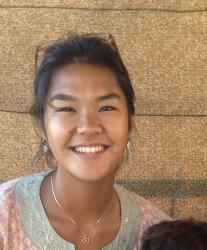The words “Fire & Ice” might conjure up thoughts of a certain, off-the-radar HBO show, but on a chilly Reykjavík morning, the phrase took on a whole new meaning for me. At first light, I downed a coffee and zipped up my parka, ready to take on Hidden Iceland’s South Coast: Fire & Ice tour. True to its name, the tour stops at two locations where Game of Thrones was filmed.
Discovering glacial history
It was at promptly 8:00 AM that I, along with 11 other adventures, cheerfully boarded the Hidden Iceland bus, which would take us on our journey. First stop: a hike on the Sólheimajökull glacier, located just two hours—158 kilometres—outside of Reykjavík.
Situated between the Katla and Eyjafjallajökull volcanoes, Sólheimajökull is part of the Mýrdalsjökull glacier, the fourth largest ice cap in Iceland. When Eyjafjallajökull erupted in 2010, it not only caused havoc in all major European airports, but it also caused a layer of volcanic ash to settle on Sólheimajökull. Seeing the glacier up close felt like I was looking at the past.

Sólheimajökull. Photo by Art Bicnick
The glacier is vast and beautifully desolate, I thought, as we set out on our hike through the crests and falls of Sólheimajökull. The clouds overhead only made the experience that much more contemplative, though we were rewarded with some pops of sunlight.
The hike was around three to four kilometres, and while it definitely made some adrenaline course through my veins, it was relaxed enough that I didn’t feel over-exerted. I appreciated this, as it let me spend my energy taking in the gorgeous scenery.
I will say, though, that as you stand on the glacier, the impact of warming temperatures hits you smack in the face. It’s clear the glaciers are melting fast. On each of his visits, our tour guide Ryan notes how much the glaciers shrunk just within weeks. In a few short decades, this glacier may be gone.
True basalt beauty
After discarding our crampons, we loaded back into the van and drove but ten minutes south to the Reynisfjara black sand beach. The beach is known for its beauty as well as for its danger. The tides are unpredictable and strong and can grab unsuspecting visitors that get too close to the water. I vowed not to become another statistic, and kept my distance from the waves. Luckily enough, I did not need to touch the Atlantic to take in the grandeur of the beach.
My first impression of Reynisfjara was of the land underneath my feet. Reynisfjara is covered in various-shaped pebbles, made from lava, which was cooled by the ocean. The rocks might seem grey at first, but rub them for but a few seconds, and they reveal their famous black colour.

Reynisfjara / Black Beach. Photo by Art Bicnick
As you look into the formidable waves of the Atlantic, you’re sure to be struck by the sight of the famous Reynisdrangar sea stacks. The towering, jagged, basalt towers look straight out of a fantasy, and indeed, they were featured in ‘Game of Thrones’ as the Night’s Watch holdout of Eastwatch-By-The-Sea.
Closer are the famous basalt cliffs and caves of Reynisfjara. Resembling a staircase, the perfectly symmetrical hexagonal shapes of the rocks are the result of the slow cooling of basaltic lava. Not only are they truly wonders to behold, but they are also ideal photo locations, and many of my fellow visitors took advantage of the unusual backdrop.
Feeling dwarfed
After witnessing this otherworldly creation of nature, we visited the Skógafoss and Seljalandsfoss waterfalls. Each are located within minutes of each other, and because Hidden Iceland times its tours to avoid overlapping big bus tours, we were able to have them almost all to ourselves.

Skógafoss. Photo by Art Bicnick
Distilling the glory of such massive structures into a few words feels impossible, but to be blunt, I felt dwarfed by the unrelenting, powerful flow of the falling water. Standing motionless at the bottom, I felt at once refreshed, terrified, energised, and meditative. I could have stood there forever.
Natural context
Our last stop was the Lava Centre Exhibition in Hvolsvöllur. Visiting museums and exhibition centres on a tour is certainly a plus, as it adds an educational element that can often be missing.
Spearheaded by an Icelandic geologist, this interactive lava centre lets visitors examine various volcanoes and see in detail the eruptions, lava flows, glacial floods and other geological activities that take place in Iceland. The museum provided a lovely context for many of the sites we had seen that day and I left feeling like I had done more than just experience the nature of Iceland, I now understood it.

LAVA Center at Hvolsvöllur. Photo by Art Bicnick
By 20:00, a solid 12 hours after first boarding our bus, we were dropped back off in Reykjavík, but not before our group created a WhatsApp group to exchange photos and extend invitations to our home countries. I got off the bus with a broad smile taking over my face. Not only had I seen the sites of southern Iceland, but I potentially made some life-long connections with people from all corners of the world. Fire & Ice—two words that will now eternally fill me with warmth.
Buy subscriptions, t-shirts and more from our shop right here!














